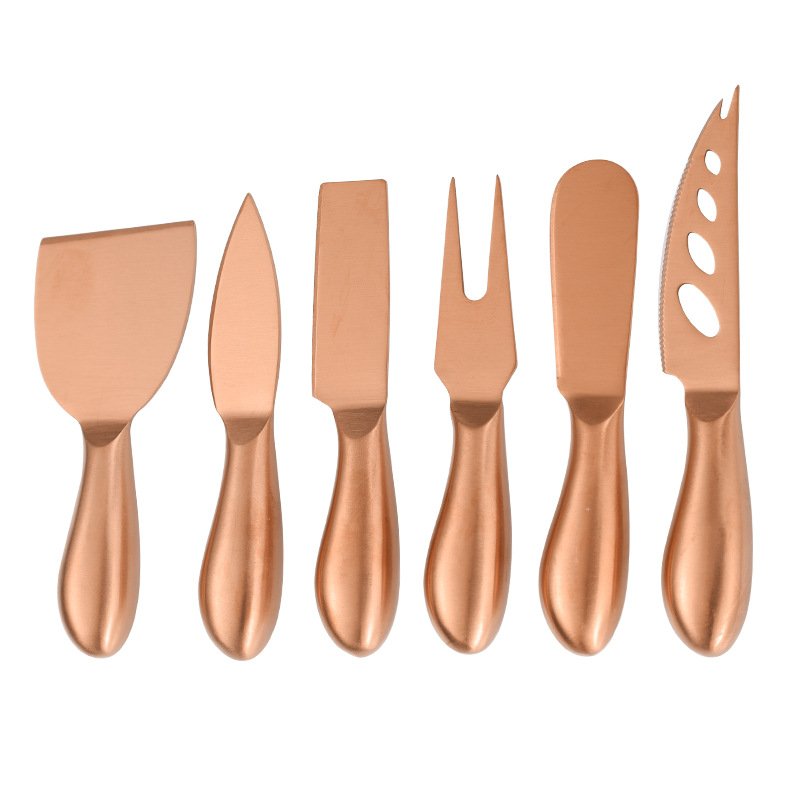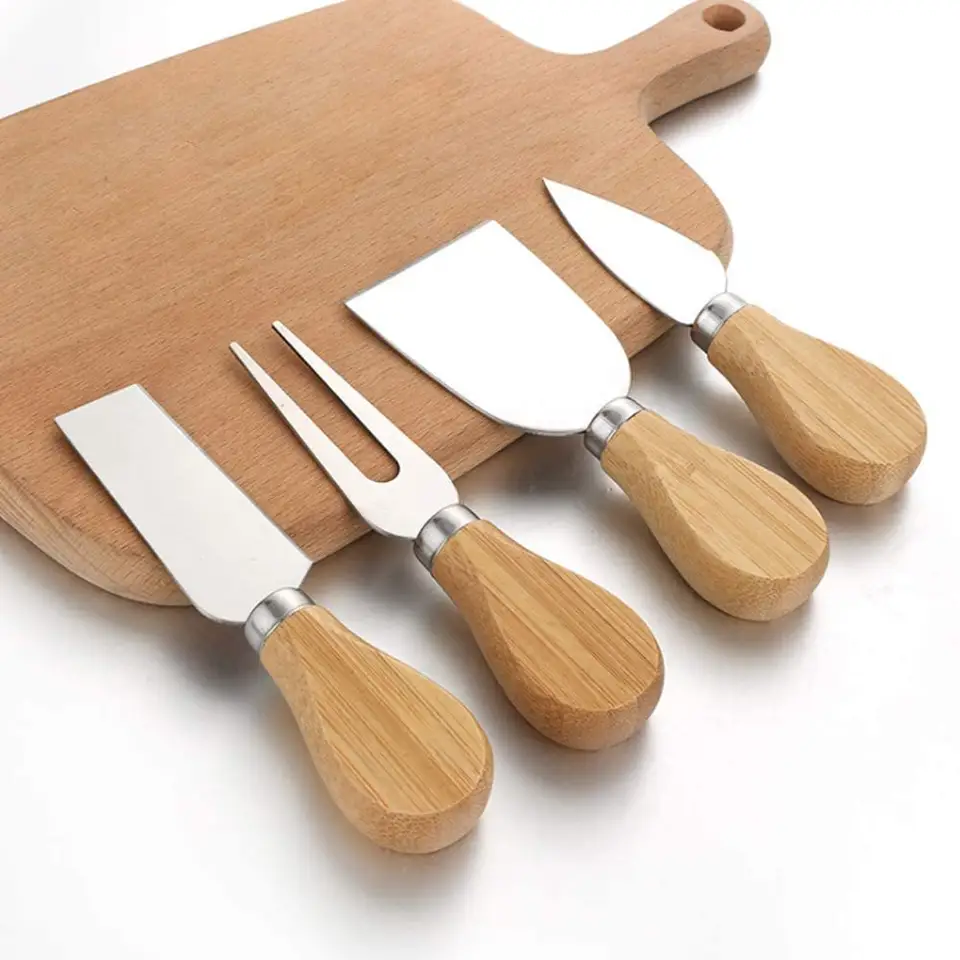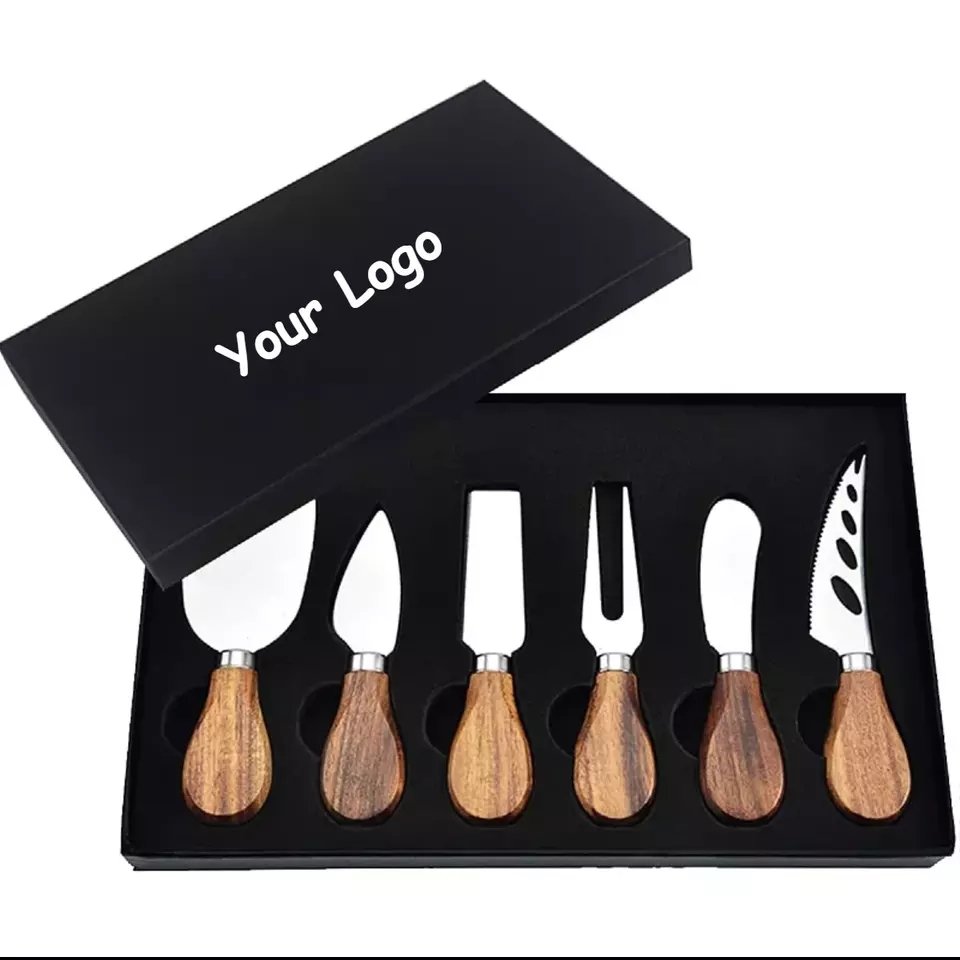People are changing the way they buy cutlery. Some look for elegance. Others want long-lasting value. Many are confused about stainless steel grades. In 2025, new trends are making the decision even harder.
In 2025, stainless steel cutlery is going beyond just durability and shine—now it’s about sustainability, comfort, and smart design.
This article will help you understand why stainless steel cutlery still dominates the market, what’s new in design and material selection, and how to judge the best value from a supplier’s point of view.
When did stainless steel cutlery become popular?
People used to eat with wood, silver, or even pewter. But then stainless steel arrived, and everything changed.
Stainless steel cutlery became widely popular after World War II due to its affordability, rust resistance, and mass production capability.
The Pre-Stainless Era
Before stainless steel, upper-class families used silver cutlery. It looked beautiful but was expensive and required regular polishing. Middle and lower-class families used wood, iron, or even brass, all of which were hard to clean or prone to rust.
The Stainless Breakthrough
In 1913, Harry Brearley in the UK discovered a steel that didn’t rust easily. Stainless steel was born. But it took decades to be used in kitchens. After the war, factories needed peacetime production lines. That’s when stainless steel cutlery flooded global markets. It was cheap, easy to clean, and shiny.
A Global Adoption
By the 1960s and 70s, most families around the world had at least one stainless steel set. It became a symbol of modern living.
🕰️ Timeline of Stainless Steel Cutlery Development
| Year | Milestone |
|---|---|
| 1913 | Invention of stainless steel by Harry Brearley in the UK |
| 1940s–1950s | Post-war mass industrial production begins |
| 1960s–1970s | Global household adoption of stainless flatware |
| 2000s | Widespread popularity of 18/10 and 304-grade cutlery sets |
Even now, people still associate stainless steel with clean, modern kitchens.
What are the disadvantages of stainless steel cutlery?
We all love stainless steel, but let’s be honest—it’s not perfect.
The main disadvantages of stainless steel cutlery are lack of color variety, occasional rust if poorly made, and a cold or heavy feel in the hand.
Appearance Limitations
Stainless steel is shiny, but that’s pretty much it. You don’t get vibrant colors unless it’s coated. Compared to plastic or ceramic, it’s not playful or warm.
Thermal Conductivity
It feels cold to touch, especially in winter. And it transfers heat fast. If you leave a spoon in a hot pot, you risk burning your fingers.
Production Concerns
Cheap stainless steel, especially 18/0 or lower, can still rust over time. Not all stainless steel is created equal.
🧾 Cutlery Material Comparison: 18/10 vs. 18/0 vs. Coated
| Grade / Type | Rust Resistance | Color Options | Weight Feel | Dishwasher Safe |
|---|---|---|---|---|
| 18/10 | ⭐ Excellent | 🎨 Limited (usually silver-tone) | ⚖️ Balanced | ✅ Yes – dishwasher safe |
| 18/0 | ⚠️ Low | 🎨 Limited | 🪶 Light | ⚠️ Sometimes – may stain |
| Coated (e.g. black, gold) | 🎲 Varies by base + coating | 🌈 High – gold, black, rainbow, matte | 🎯 Depends on base material | ❌ Risk of fading/peeling over time |
Sustainability Questions
Although it’s reusable, production still has a carbon footprint. Mining and smelting steel requires energy and emits CO2.
What grade stainless steel cutlery is best?
Not all stainless steels are the same. Some shine longer, resist rust better, or feel better in your hand.
The best grade for stainless steel cutlery is 18/10, known for its balance of durability, shine, and rust resistance.
Breaking Down the Numbers
“18/10” means 18% chromium and 10% nickel. Chromium prevents rust. Nickel adds shine and smoothness.
Other Common Grades
🧾 Stainless Steel Grades at a Glance
| Grade | Nickel Content | Corrosion Resistance | Shine | Common Use |
|---|---|---|---|---|
| 18/8 | 8% | ✅ Good | ✨ Slightly less than 18/10 | 🍽️ General cutlery, food containers |
| 18/0 | 0% | ⚠️ Low – prone to rust | ❌ Matte, duller | 💲 Budget cutlery, magnetic, short-term use |
| 304 | ~8% | ✅ Same as 18/8 (food-grade) | ✅ Good | 🧼 Food-grade tools, kitchen equipment |
| 316 | 10–14% + Molybdenum | ⭐ Excellent (acid/salt resistant) | ✅ Good | 🌊 Marine tools, medical use – rare in cutlery |
🧾 Stainless Steel Cutlery Grades Comparison
| Grade | Chromium % | Nickel % | Durability | Shine | Rust Resistance |
|---|---|---|---|---|---|
| 18/10 | 18% | 10% | ⭐⭐⭐⭐ High | ✨ High | 🛡️ Excellent |
| 18/8 | 18% | 8% | ⭐⭐⭐ Medium | 👍 Medium | ✅ Good |
| 18/0 | 18% | 0% | ⭐ Low | ❌ Low | ⚠️ Fair |
Most premium hotel sets and high-end restaurant collections use 18/10.
What is the best number for stainless steel silverware?
Shoppers often get confused by all the numbers. Let’s break it down.
The best number for stainless steel silverware is 18/10 for its superior corrosion resistance, shine, and feel.
Why These Numbers Matter
Chromium gives steel its resistance to rust. Nickel makes it shiny and durable. A higher nickel content often means a better product.
Which Numbers to Avoid
Anything with less than 8% nickel or no nickel at all tends to perform worse over time. You’ll notice rust stains, discoloration, or dull edges.
Comparing Common Ratios
🧾 Which Stainless Steel Ratio is Right for You?
| Ratio | Best For | Performance |
|---|---|---|
| 18/10 | 👑 Premium homes, luxury hotels, elegant gifts | ⭐⭐⭐⭐⭐ Excellent |
| 18/8 | 🏠 General households, mid-range brands | ⭐⭐⭐⭐☆ Very Good |
| 18/0 | 💲 Budget use, disposable sets, everyday basics | ⭐⭐☆☆☆ Basic |
Many customers start with 18/0 for the price, then upgrade to 18/10 once they see the difference.
Why is stainless steel so popular?
You see it in homes, cafes, planes, and restaurants. Why?
Stainless steel is popular because it’s durable, hygienic, affordable, and easy to clean—ideal for everyday use.
Long Life Span
Stainless steel can last decades without needing replacement. This makes it a good investment.
Hygiene and Safety
It doesn’t absorb smells or flavors. It’s non-porous. You can sanitize it easily.
Easy Maintenance
You don’t need special cleaners. Most stainless cutlery is dishwasher-safe.
Versatility
Works with any table setting. Casual or formal. Western or Asian.
Cost Effectiveness
Not the cheapest, not the most expensive. But it gives the best value per use.
🥄 Cutlery Material Comparison: Stainless Steel vs. Others
| Feature | Stainless Steel | Wood / Ceramic / Plastic |
|---|---|---|
| Durability | ⭐ Very High – resists bending, breakage, rust | ⚠️ Low to Medium – may crack, chip, or warp |
| Reusability | ♻️ High – long-lasting, daily use ready | ♻️ Medium – reusable but shorter lifespan |
| Maintenance | ✅ Easy – dishwasher safe, non-porous | ❌ Hard – prone to stains, cracks, requires care |
| Price | 💰 Medium – excellent long-term value | 💲–💎 Low to High – plastic is cheap, ceramics can be expensive |
| Look | ✨ Modern / Classic – versatile styling | 🎨 Varies – rustic (wood), artisanal (ceramic), casual (plastic) |
In short, stainless steel fits every lifestyle.
Does gold plated cutlery make food taste better?
Looks luxurious, yes. But taste? That’s debatable.
Gold plated cutlery does not affect food taste; it only enhances visual appeal and perceived luxury.
Aesthetic vs. Function
Gold-plated forks and spoons are more about the dining experience. They catch the light. They look fancy. But they don’t improve flavor.
Metal Inertness
Gold doesn’t react with food. That’s why it’s used in some high-end kitchen tools. But stainless steel already does the same job.
Maintenance Issues
Gold plating can fade or wear off. It’s not always dishwasher-safe. And it’s costly.
✨ Stainless Steel vs. Gold-Plated Cutlery
| Feature | Stainless Steel | Gold Plated |
|---|---|---|
| Taste Impact | ❌ None – neutral material | ❌ None – safe for food contact |
| Visual Appeal | ✨ Clean, modern, versatile | 💎 Luxurious, elegant, showpiece-worthy |
| Durability | 🛡️ High – built for long-term use | ⚠️ Moderate – coating may fade over time |
| Maintenance Need | ✅ Low – dishwasher safe, no polish needed | ❌ High – hand wash recommended to preserve plating |
| Cost | 💰 Affordable | 💎 Expensive – often used for gifting or decor |
So if your goal is taste, stainless is still the smarter choice.
How can you tell if stainless steel is high quality?
Many buyers assume stainless steel is all the same. It’s not. There are clear signs that tell whether your cutlery will last or rust within a year.
Check the stainless steel grade, polish quality, and weight. 18/10 stainless steel with a mirror finish and solid feel usually indicates high quality.
1. Steel Grade: A Quick Quality Indicator
The first clue lies in the grade. Look for a marking like 18/10, 18/8, or 18/0. These numbers tell you how much chromium and nickel the steel contains.
🧾 Stainless Steel Grades Comparison Chart
| Grade | Chromium (%) | Nickel (%) | Durability | Shine | Rust Resistance |
|---|---|---|---|---|---|
| 18/10 | 18% | 10% | ⭐⭐⭐⭐⭐ High | ✨ High | 🛡️ Excellent |
| 18/8 | 18% | 8% | ⭐⭐⭐ Medium | 👍 Medium | ✅ Good |
| 18/0 | 18% | 0% | ⭐ Low | ❌ Low | ⚠️ Poor |
More nickel means more shine and better corrosion resistance. That’s why 18/10 is preferred in hospitality and premium home use.
2. Weight in Hand: Don’t Skip This Test
High-quality stainless steel feels heavy and balanced. If it’s too light, it may be hollow or made from thinner steel sheets. These cutlery sets might look fine at first, but they’ll bend, stain, or break more easily over time.
3. Polish and Finish: Mirror vs. Matte
The surface finish also tells a story. A good mirror polish is smooth and reflects light evenly, with no visible pits or dull spots. Cheap polishing fades quickly or has scratches even when new.
4. Sound Test: A Surprising Tip
Tap the fork against a plate. High-quality stainless steel has a crisp, bell-like ring. Lower-quality metal sounds dull or flat.
5. Dishwasher Performance
Good stainless steel doesn’t stain or lose shine after multiple washes. Test a sample or check if the manufacturer claims long-term dishwasher safety.
What is the best number for stainless steel silverware?
The best number often depends on what you want. But in most cases, it’s 18/10. This ratio offers the best mix of corrosion resistance, shine, and long-term strength.
The best number for stainless steel silverware is 18/10, offering high durability and corrosion resistance.
Let’s break down what these numbers really mean.
What Do the Numbers Mean?
🔍 Understanding Stainless Steel Labels: 18/10, 18/8, 18/0
| Label | First Number (Chromium) | Second Number (Nickel) | Meaning |
|---|---|---|---|
| 18/10 | 18% | 10% Nickel | 💎 Premium – high shine, strength, and rust resistance |
| 18/8 | 18% | 8% Nickel | 👍 Reliable – good durability and corrosion resistance |
| 18/0 | 18% | 0% Nickel | 💲 Budget – may rust, less shiny, magnetic |
🔢 What Do the Numbers in 18/10, 18/8, and 18/0 Mean?
18 = Chromium
🔹 Adds hardness and prevents rust.
🔧 Without chromium, stainless steel wouldn’t be “stainless” at all.10 / 8 / 0 = Nickel
✨ Adds shine and improves corrosion resistance.
💎 The more nickel, the better the durability and luster.
Why Is 18/10 the Sweet Spot?
It won’t rust easily – thanks to high chromium content.
It keeps its shine longer – because of added nickel.
It survives thousands of dishwasher cycles – durable, practical, and made to last.
Some brands use 18/8 or 18/0 to save cost. That’s okay for temporary or low-budget use, but not ideal for long-term quality.
Should I Pay More for 18/10?
Yes—if you care about durability, hygiene, and appearance. Many hotels and restaurants choose 18/10 for these reasons. At home, it’s the best choice for daily use with minimal maintenance.
What is the future of stainless steel?
Stainless steel is evolving, not fading. In fact, as people demand safer and longer-lasting kitchen tools, stainless steel is becoming even more essential.
The future of stainless steel is strong, with growth driven by health safety, sustainable materials, and design innovation.
Global Trends Shaping the Market
🔮 2025 Stainless Steel Cutlery Trends
| Trend | Description |
|---|---|
| ♻️ Sustainability | Fully recyclable, no coating, long lifespan – aligned with global eco goals |
| 🛡️ Health Safety | Nickel-safe, non-toxic, BPA-free – increasing demand for clean materials |
| 🪨 Matte Finishes | Trending over mirror polish – elegant, fingerprint-resistant, modern look |
| 🖐️ Minimalist Ergonomic Design | Sleek shapes, smooth grip, comfort-focused for modern lifestyles |
| 🌈 Colored Stainless | Durable titanium coatings or sandblasted finishes – aesthetic + performance |
Stainless steel is now part of eco-luxury. It’s affordable, recyclable, and visually customizable. More brands are creating cutlery with unique finishes, low-nickel blends, and ergonomic styling to meet consumer tastes.
Market Data: It’s Still Growing
| Year | Global Stainless Demand (million tons) |
|---|---|
| 2022 | 56.3 |
| 2024 | 59.1 |
| 2025 (forecast) | 61.5 |
Smart Factories Enter the Scene
AI and robotic manufacturing now allow for:
– Tighter quality control
– Faster production cycles
– Customization at scale
My Take
As a supplier, I’m seeing more requests for non-reflective finishes, dishwasher safety claims, and certifications like LFGB, FDA, and REACH. Buyers are smarter than ever. The material hasn’t changed much, but how it’s *made* and *used* certainly has.
Who is the largest consumer of stainless steel?
China still leads the stainless steel consumption worldwide. The country’s infrastructure, consumer goods, and cutlery manufacturing make it the biggest player.
China is the largest consumer of stainless steel, driven by industrial, construction, and export-based kitchenware demand.
Top Consumers in 2024
🌍 Global Stainless Steel Demand by Region & Usage (2025)
| Country/Region | Primary Usage Type | Global Demand Share (%) |
|---|---|---|
| 🇨🇳 China | Construction, manufacturing, kitchenware | 58% |
| 🇮🇳 India | Infrastructure, transport | 8% |
| 🇺🇸 USA | Household goods, automotive | 6% |
| 🇪🇺 EU | Industrial use, foodservice equipment | 10% |
| 🌐 Rest of World | Mixed – domestic, infrastructure, industrial | 18% |
China’s dominance doesn’t just reflect quantity—it’s also about specialization. Many of the world’s mid-to-high-end cutlery brands source from China-based factories (like mine).
Why Does This Matter?
🌐 Why Regional Stainless Steel Demand Matters
The way stainless steel is consumed across regions—especially with China leading over 50% of demand—has ripple effects on the global cutlery market. It affects:
Global Prices: Fluctuations in Asia can drive up or lower raw material costs worldwide.
Product Availability & Lead Times: High demand in infrastructure or manufacturing may delay supply for consumer-grade goods like cutlery.
Design & Style Trends: Material availability directly impacts cutlery thickness, finish types, and even shape—supply often shapes style.
When Chinese demand surges, raw material prices rise. That’s why many buyers lock in contracts early.
Who buys the most stainless steel?
Most stainless steel is bought by industries, but within consumer goods, the biggest buyers are kitchenware and foodservice companies.
Manufacturers of cutlery, cookware, and industrial tools are the top stainless steel buyers worldwide.
By Industry
🛠️ Common Applications of Stainless Steel by Sector
| Sector | Use for Stainless Steel |
|---|---|
| 🍽️ Kitchenware | Cutlery, pots, pans, cooking utensils |
| 🏗️ Construction | Structural pipes, building frames, reinforcement rebar |
| 🚗 Automotive | Exhaust systems, trim, body parts |
| 🍴 Foodservice | Industrial kitchen equipment, serving tools, cutlery |
| 🏥 Medical | Surgical instruments, trays, cleanroom equipment |
Buyer Types
🧠 Cutlery Buyer Types & Their Key Characteristics
| Buyer Type | Characteristics |
|---|---|
| 🏷️ OEM Brands | Purchase in large volumes, emphasize strict quality control and stable supply |
| 🔄 Trading Companies | Prioritize low price, buy in bulk to resell to small retailers |
| 🍽️ Restaurant Chains | Require customized designs, focus on durability and consistent quality |
| 🛒 Retailers (e.g. Walmart, Costco) | Prefer certified suppliers (FDA, LFGB, BSCI), consistent packaging & labeling |
| 🤝 Direct B2B Buyers | Need small MOQs, flexible product combinations, and quick turnaround |
In my experience, the savviest buyers are those who look for long-term supplier relationships, not just low prices. They understand how stainless quality affects their brand reputation.
Which is better, 18-10 or 18 0 stainless steel flatware?
The answer is clear. 18-10 beats 18/0 in almost every way, unless you’re aiming for the lowest cost possible.
18-10 is better than 18-0 for flatware due to its superior rust resistance, shine, and long-term value.
Head-to-Head Comparison
🔍 18-10 vs. 18-0 Stainless Steel Cutlery: Key Differences
| Feature | 18-10 Stainless Steel | 18-0 Stainless Steel |
|---|---|---|
| ✨ Shine | High-gloss, mirror-like finish | Low sheen, more matte |
| 🛡️ Corrosion Resistance | Excellent – resists rust & tarnish | Fair – more prone to rust over time |
| 💰 Cost | Higher – premium material | Lower – cost-effective |
| 🏠 Common Use | Hotels, luxury homes, premium dining | Budget markets, schools, casual dining |
| 🧪 Nickel Content | 10% – enhances shine & resistance | 0% – nickel-free, but less protection |
| 🧼 Dishwasher Safe | ✅ Yes – long-term shine & durability | ⚠️ Risk of staining over time |
Why Some Still Choose 18-0
– Lower cost, especially in emerging markets
– No nickel (for customers with allergies)
– Suitable for short-term use, like events or schools
What I Recommend
Go for 18/10 if:
– Your customers care about appearance and longevity
– You’re selling in high-end or hospitality channels
– You want fewer product returns
Choose 18/0 if:
– You’re targeting bulk contracts with low price sensitivity
– Customers value “nickel-free” claims
In 2025, the stainless steel cutlery market is moving toward smarter choices, not just shinier forks. Quality, safety, and design all matter more than ever.





